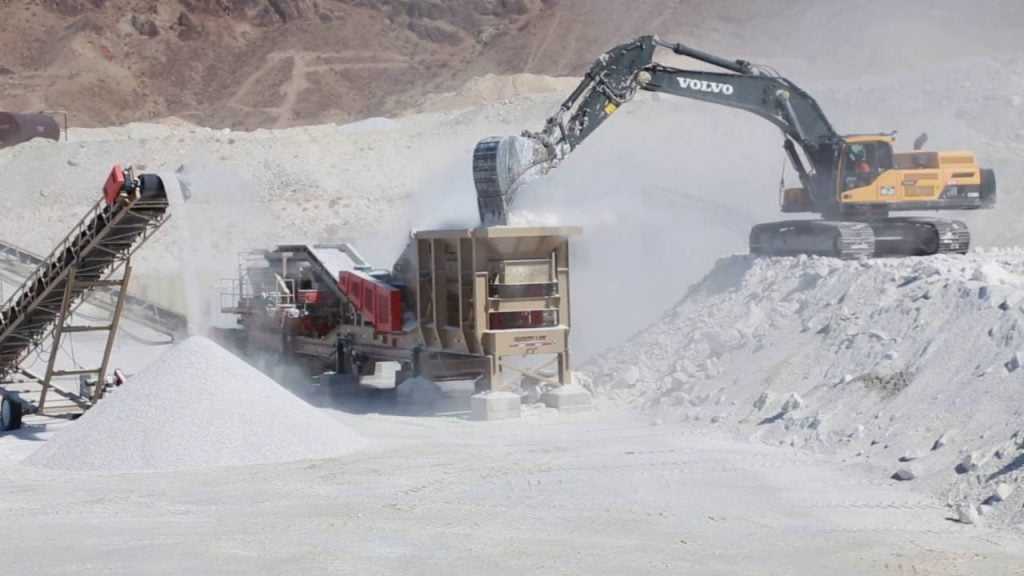
Gypsum, also known as calcium sulfate hydrate, is a naturally occurring mineral found in layers of sedimentary rock all over the world. It is formed by the evaporation and replenishment of waters containing calcium and sulfates.
White or gray in color, gypsum can be ground into a fine powder and boiled until the majority of its moisture is removed — a process known as calcination. Adding the water back to this powder creates a pliable substance that can be formed into a shape or mold and will harden to hold that form, or the substance can be added to other materials to bind them together.
Because of its binding abilities, gypsum is a primary ingredient in some toothpastes. It is also used as plaster to create surgical casts; as an additive in many foods, like canned vegetables, ice cream and tofu; and as an amendment, conditioner and fertilizer for agricultural applications. Other uses of gypsum include:
For settling particles in ponds For brewing beer and making mead For creating drywall, wallboard or plasterboard For binding tennis court clay As molds for dinnerware, car windows and dental impression plasters As a hardening element in Portland cement In roads and highways As sidewalk or classroom chalk In hair products, like shampoo, and creams And much, much more.
Although gypsum plays an important role in our lives and is found in many of our homes, food and hygiene products, many people do not know much about this mineral or even that it exists at all. Here are some lesser-known facts about this mineral that is a mystery to many.
1. It was the star of many early movies
Before the era of computer generated imagery, early Hollywood filmmakers used a number of substances to create fake snow on set, including cotton, cornflakes and soap flakes. They also used shaved gypsum to mimic the look of real snow.
But snow isn’t the only role gypsum has played on the silver screen. One of its recurring roles is in the creation of movie sets.
Since gypsum is common in the production of sidewalks, it stands to reason that the mineral may have been cemented in the Hollywood Walk of Fame. The stars are made of terrazzo, which is composed of marble chips, granite, quartz or glass and poured on a concrete base. Concrete is often bonded with Portland cement so that it can harden, and gypsum is an element in Portland cement.
2. It’s found in the Egyptian pyramids
When the Egyptians learned that gypsum could be made into plaster by grinding it up and adding water, they used it everywhere inside their palaces, pyramids and tombs. As it still holding up thousands of years later, gypsum proves to be a durable building material.
3. It was named by the Ancient Greeks
The name “gypsum” is derived from the ancient Greek word “gypsos,” which means plaster. The ancient Greeks used a form of gypsum in the windows of their temples because of the moonlight effect it created on the altars when the sun shone through. The ancient Greeks named this form of gypsum “selenite” after their moon goddess, Selene, and the name has stuck all these years.
4. Ben Franklin used gypsum on his farm
Benjamin Franklin was the one of the first people in the United States to use gypsum. He called it “land plaster” and put it to work on his farm to condition the soil. This land plaster is still used in agricultural applications today to provide a source of plant nutrition, to improve the structure of the soil and to reduce runoff, among other benefits.
5. Gypsum-coated walls offer fire protection
The walls and ceilings of many houses are covered with drywall because it is both easy to install and simple to finish with a coat of paint. But drywall, which is made of gypsum plaster, offers another benefit to homeowners besides ease of decorating – it offers protection in the event of a fire.
Because gypsum contains water, it will not heat past 212° F should a fire occur in the home. The water in the gypsum will be released as steam and the drywall will remain at 212° F until all the water has evaporated out. Although gypsum is not fireproof, it will protect the structure of the house from damage for a period of time.
How gypsum is processed?
Gypsum in its natural state is an ore often found layered with limestone. It is liberated from its natural state most commonly by surface mining. To get the gypsum ore into a state where it can be sold for its many uses, it is crushed to size using DDC-Sizers, Feeder-Breakers, Hammermill Crushers, Jaw Crushers or Roll Crushers and stockpiled to await further processing. The crushed gypsum is screened using Vibratory Screens to separate the sizes for their different uses. One size from the screen may be sold as a cement retarder, while another size may be stockpiled for further processing. Further processing includes drying the ore to remove excess moisture, then grinding it into a fine powder known as land plaster. The land plaster is collected in a Hydrocylcone, discharged onto a conveyor and stockpiled for sale as a soil conditioner.
To create stucco, the land plaster is heated with hot gasses either directly in a flash calciner or indirectly in a kettle calciner to remove much of the chemically bound water. The stucco can be further ground and mixed with retarders to create plasters, or it can be mixed with dry additives, water, shredded paper, accelerators and soap foam; spread in a mold; and dried in a kiln to create wallboard.
